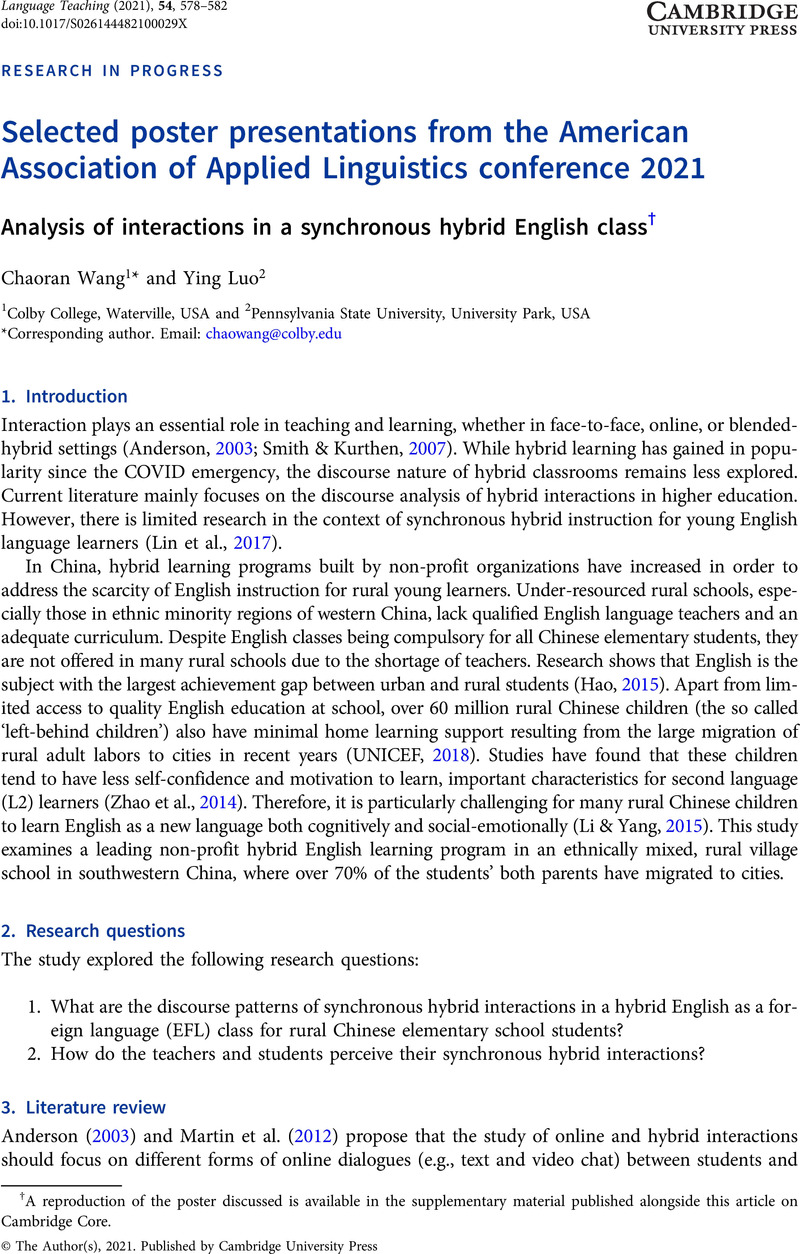Crossref Citations
This article has been cited by the following publications. This list is generated based on data provided by Crossref.
Jakonen, Teppo
Jauni, Heidi
and
Sert, Olcay
2024.
Achieving Joint Attention and Understanding of Task Responsibilities in Synchronous Hybrid L2 Classroom Group Work.
Applied Linguistics,
Giacosa, Antonella
2024.
Effective Multimodal Interaction for Online and Hybrid Teaching.
p.
27.
Giacosa, Antonella
2024.
Effective Multimodal Interaction for Online and Hybrid Teaching.
p.
79.
Wang, Chaoran
and
Canagarajah, Suresh
2024.
Postdigital ethnography in applied linguistics: Beyond the online and offline in language learning.
Research Methods in Applied Linguistics,
Vol. 3,
Issue. 2,
p.
100111.
Giacosa, Antonella
2024.
Effective Multimodal Interaction for Online and Hybrid Teaching.
p.
125.




